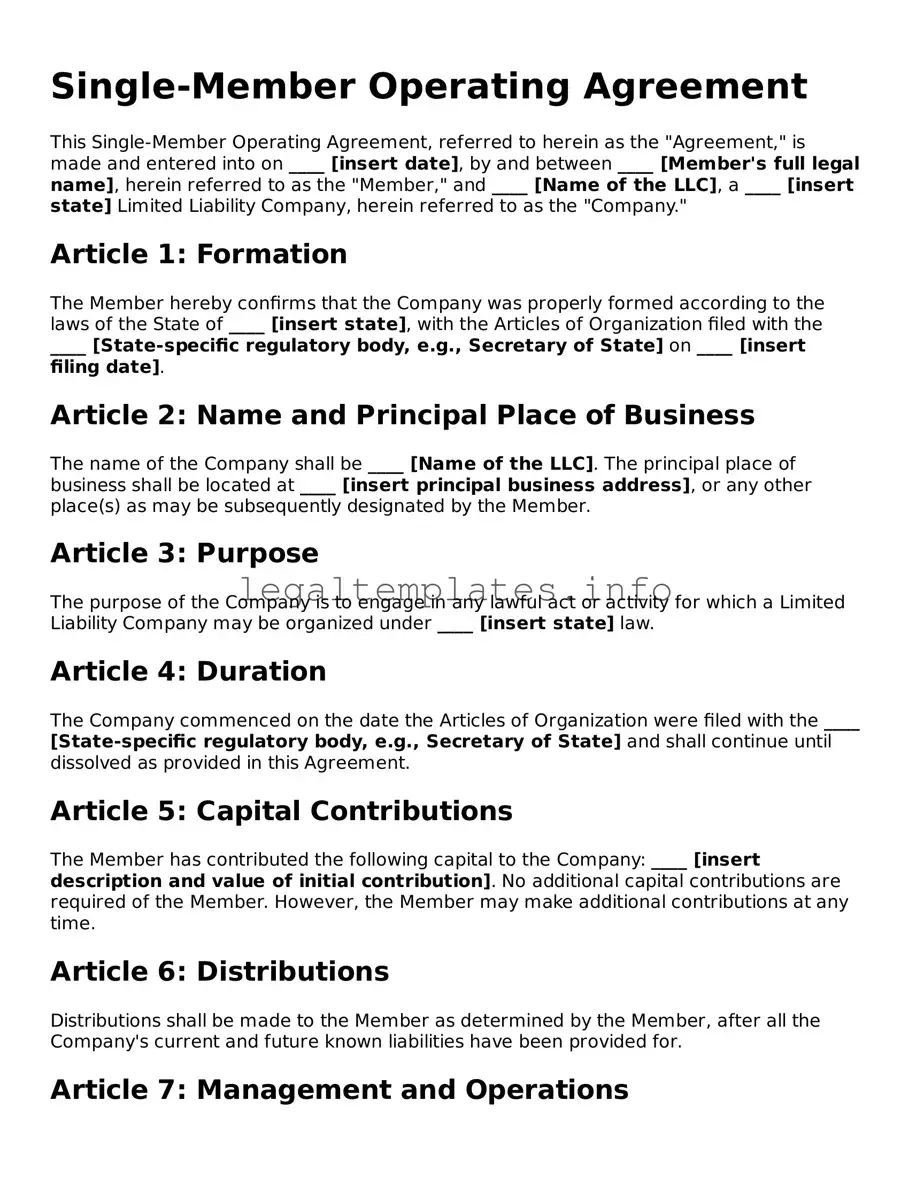Single-Member Operating Agreement
This Single-Member Operating Agreement, referred to herein as the "Agreement," is made and entered into on ____ [insert date], by and between ____ [Member's full legal name], herein referred to as the "Member," and ____ [Name of the LLC], a ____ [insert state] Limited Liability Company, herein referred to as the "Company."
Article 1: Formation
The Member hereby confirms that the Company was properly formed according to the laws of the State of ____ [insert state], with the Articles of Organization filed with the ____ [State-specific regulatory body, e.g., Secretary of State] on ____ [insert filing date].
Article 2: Name and Principal Place of Business
The name of the Company shall be ____ [Name of the LLC]. The principal place of business shall be located at ____ [insert principal business address], or any other place(s) as may be subsequently designated by the Member.
Article 3: Purpose
The purpose of the Company is to engage in any lawful act or activity for which a Limited Liability Company may be organized under ____ [insert state] law.
Article 4: Duration
The Company commenced on the date the Articles of Organization were filed with the ____ [State-specific regulatory body, e.g., Secretary of State] and shall continue until dissolved as provided in this Agreement.
Article 5: Capital Contributions
The Member has contributed the following capital to the Company: ____ [insert description and value of initial contribution]. No additional capital contributions are required of the Member. However, the Member may make additional contributions at any time.
Article 6: Distributions
Distributions shall be made to the Member as determined by the Member, after all the Company's current and future known liabilities have been provided for.
Article 7: Management and Operations
The Company shall be managed solely by the Member. The Member has the right to participate in the management and conduct of the business affairs of the Company.
Article 8: Limitation of Liability
The Member's liability for debts, obligations, or liabilities of the Company, including under a judgment, decree, or order of a court, is limited to the Member's capital contribution to the Company. The Member is not liable personally for any debts, obligations, or liabilities of the Company solely by being a member.
Article 9: Indemnification
The Company shall indemnify the Member against all debts, obligations, and liabilities of the Company, whether arising in contract, tort, or otherwise, solely to the extent of the Company’s assets.
Article 10: Governing Law
This Agreement shall be governed by and construed in accordance with the laws of the State of ____ [insert state], without regard to its conflicts of laws principles.
Article 11: Amendments
This Agreement can only be amended, altered, or revoked by a written document signed by the Member.
Article 12: Dissolution
The Company shall be dissolved upon the occurrence of any of the following: the Member's decision to dissolve the Company, the sale of substantially all the Company’s assets, or any other event causing the termination of the business in accordance with the state law of ____ [insert state].
Article 13: Signatures
By signing below, the Member agrees to abide by all terms and conditions of this Agreement.
Member's Signature: ___________________________ Date: ______
Print Name: ____ [Member's full legal name]
